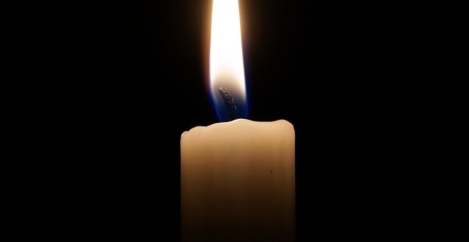October 20, 2022
Winter is coming: don’t be in the dark about blackouts
 The National Grid has warned that the UK could face blackouts this winter. The worst-case scenario is that homes and businesses could lose power for pre-defined periods of up to three hours if gas power plants are not able to keep running due to the energy crisis that keeps on giving – or rather, taking. While the British government has dropped its energy rationing campaign, which once formed a crucial part of its plan to prepare for potential energy shortages and blackouts, countries across Europe are drawing up winter contingency plans, as are forward-thinking businesses.
The National Grid has warned that the UK could face blackouts this winter. The worst-case scenario is that homes and businesses could lose power for pre-defined periods of up to three hours if gas power plants are not able to keep running due to the energy crisis that keeps on giving – or rather, taking. While the British government has dropped its energy rationing campaign, which once formed a crucial part of its plan to prepare for potential energy shortages and blackouts, countries across Europe are drawing up winter contingency plans, as are forward-thinking businesses.
While Steve Henigan, managing director of HCG, believes the risk of blackouts is low, he’s mindful of the fact that we are being served plenty of notice of the potential risk and suggests that organisations should invest in and test technology now to reduce the likelihood of downtime.
“Covid caught many businesses off guard because they hadn’t tested their business continuity plan or had assumed that a worst-case scenario would never play out,” said Henigan. “Let’s not make the same mistake again. The key will be forward planning and, dare I say, common sense. Most phones, tablets and laptops have pretty good battery life and so when fully charged can keep people online in times without power.”
Although it might feel like we’re about to blindly wobble back into the Dark Ages, this is already a reality for certain pockets of the planet. Take the Republic of South Africa, for example. South Africa experienced its first taste of ‘load shedding’ (what the UK refers to as ‘blackouts’) as far back as 2008. Since then, there have been various stages and levels of severity. In the early days, power outages lasted for a couple of hours a week. Now, however, the country faces downtime for two-to-three hours a day, every day of the week, for a couple of weeks at a time.
When dealing with mild load shedding schedules, that’s to say a few hours of blackouts a week, a basic back-up generator and Uninterruptible Power Supply infrastructure suffice to keep the power on for core essentials, such as IT networks, whereas sacrifices to less essential services like air-conditioning are commonplace for South African workplaces.
For severe load shedding schedules, like what South Africa is dealing with right now, the redundancy efforts need to run for longer, so there is less time in-between blackout periods to recover. It’s a changeable and challenging landscape and so, despite the country’s fourteen year history with load shedding, managing blackouts has not yet been mastered.
Learning to live with it
Since the UK is potentially on the cusp of similar disruption, I spoke to Ian Badenhorst of Giant Leap Workplace Specialists, an award-winning office interior design firm in South Africa, to find out how to manage operations when the electricity-based infrastructure we rely on for power powers down, and to understand what businesses and their workplace teams should put in place now ahead of the winter when we’re expected to see blackouts.
“Business continuity planning is only possible if a country’s government along with its grid thoroughly plans the scheduling of outages and the associated communications,” said Badenhorst. “If we assume that’s a given, a number of steps need to be taken.
“Step 1. Audit your power usage, and establish the minimum requirement for redundancy power. It is somewhat tricky to determine how many people a workplace has to cater for, particularly when so many businesses are still in a state of flux with their return-to-office (RTO) policies.
“Step 2. Be clear with your landlord what your findings are from Step 1. They must supply the facility with the bare minimum, and you should be encouraged to overlay that with some further redundancy options of your own.
“Step 3. Try as far as possible to be as planned as you can be. Simple things like making sure your laptop is always charged, looking at the black-out schedule and managing your diary will be vital.
“Step 4. It doesn’t matter how good your systems or processes are, you will still experience an element of downtime – your Teams meeting or Zoom call will drop, and there will be variable rates to the reconnection of each person, so dial up your softer skills, appreciate that your emotional intelligence will be tested and just be patient.
“Step 5. Every business will be impacted in one form or another, and at various degrees of complexity, so be clear and open to your business ecosystems on the impact it will have on them. You also need to consider the indirect impact on business, such as delivery time, travel time (due to traffic lights being down), general queuing for public services and so on.”
Shining a light on a new workplace dynamic
If blackouts become a reality for the UK like they have in South Africa, effective communications strategies and management frameworks will become even more crucial. Equally, it’s not unreasonable to assume that work and workplace models may have to flex. What happens to employee flexibility and freedom when a country’s infrastructure lacks flexibility and freedom?
“The Covid enforced lockdown has positively changed the ability for most office workers to work from home and almost all organisations now promote or at least offer a hybrid solution where employees can work both at home and in the office,” commented Henigan. “I think any changes to this will be based on individuals home circumstances and the facilities of the offices they work in, particularly when it comes to heating and lighting.”
Changes to the work from home protocol may be an answer for some organisations. Badenhorst stressed that workplace professionals consider the impact on the work from home (WFH) dynamics: “My understanding is that Wi-Fi is a lot more accessible in the UK, and if the blackouts are being extended to residential areas, all those employees need to have the back-up infrastructure in place too. Those that don’t have the minimum requirements may have to make their way back to the office. If there is push back from those that do not have the sufficient infrastructure at a residential level, then someone needs to foot the bill to have the necessary upgrades implemented.”
Many large professional services firms spanning across the financial and insurance sectors have given their staff an ultimatum. To work from home, you may not be offline during working hours. Ever. Employees must either return to the office, or procure inverter solutions.
Spring isn’t too far behind
It’s not all doom and actual gloom. With every challenge there is opportunity. William Poole-Wilson, managing director of Will + Partners, thinks the potential of blackouts may serve as a reminder that we need physical space as much as we need access to the digital and virtual world.
“Perhaps it’s a worthwhile time to reset our digital and electronic relationships so we spend less time in Teams and Zoom meetings, and more time together in a shared space to boost collaboration, culture and community, whether we’re on or offline,” he pondered.
Regardless of what’s coming our way, we’re getting pretty good at living with and adapting to crises. Challenges like the pandemic, cost-of-living, energy shortages and the modern Dark Age that may come with it have a habit of inspiring new ideas and new ways of doing things. Every winter has its spring, after all, and who knows what the next lesson might be?
Whether we think it’s likely or not, let’s not be in the dark about the reality of blackouts. Let’s plan in advance so we’re not knocked for six when the next worst-case scenario comes a’knocking.

Jo Sutherland is Managing Director of Magenta Associates.













